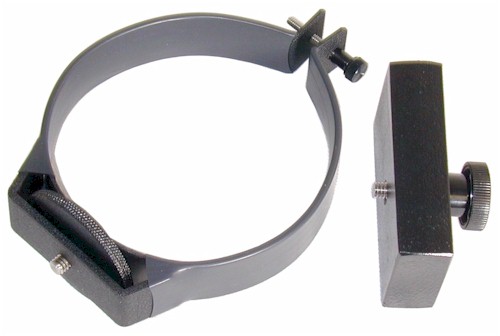Nikon D90 Astrography?
I have a Nikon D90 with a few lenses (18-105 f3.5/5.6, 70-300 f4/5.6, 35 f1.8). I would like to be able to take a picture of a galaxy, say andromeda or something, but I'd prefer to use just a tripod. Is this possible? How do I do it? What exposure settings should I use?
Thanks =]
Added (1). I do have an old ETX 90 or something hiding away in a closet. I think that can track stars. What kind of exposure settings do I need to take pictures of DSOs? (Aperture, Shutter and ISO)
Galaxies are considered DSO's (Deep Sky Objects). The problem with simply using a tripod is that you have no compensation for the movement of the earth or the rotation of the object as you try to photograph it. That's why astronomers use what is known as an Equatorial (EQ) Mount. Have you ever seen a photograph of the night sky where the stars are just circular white lines in the sky? That's what you would wind up with if you try to take a picture of a DSO using simply a tripod. You would see the stars "trailing" instead of having bright pinpoints of light. You will need to invest in a EQ mount and one for merely supporting a DSLR would not cost you a lot. Using a tripod, you could only leave your shutter open for a few seconds without experiencing star trails and it takes a much longer exposure (several minutes) to capture a DSO.
It is possible. You do need some extra accessories to enhance your chances -
External timer. This allows you to exceed the cameras normal shutter limit and have better control over the bulb control -
http://www.amazon.com/...B001QSG4R8
Barn Door tracker. Simple system that allows you to counteract the earths rotation and latitude for your area (example) -
http://www.jlc.net/~force5/Astro/ATM/Barndoor/barndoor.html
Alternatively, you can get something like this -
http://www.astrotrac.com/
A sturdy tripod. You want something that doesn't vibrate and has some mass behind it. Shop around a little bit for a surveyor's tripod -
http://www.largeformatphotography.info/surveyor-tripod-conversion/
Personally, I steer clear of zoom lenses for astrophotography. Use primes instead. A cheap source for those type of lenses are the old M42, Pentax screw mount and an adapter plate. These you can find on ebay for a good price.
http://www.amazon.com/...002VRZVTK/
Finally, software. It's better to take lots of short exposures and stack them together to make a better picture -
http://www.astronomie.be/registax/
http://deepskystacker.free.fr/english/index.html
For more information -
http://www.astro.shoregalaxy.com/dslr_astro.htm
http://www.covingtoninnovations.com/dslr/EOS300Dastro.html

You can "piggyback" the camera on top of the ETX using a special bracket that third-party astronomy businesses will produce. For example,

It is also possible to remove the telescope from the forks and attach the camera between them. I'll try to find the link. Here it is. This or some other adaptation:
http://www.members.shaw.ca/wjm890131/JAlbum-web/ETX%20Camera%20Mount.htm
Either way, the mount has to be polar-aligned.
Andromeda is one of very few galaxies you could get on an open-sky shot. I haven't tried getting Andromeda from where I live with a wide-field shot because it's only visible from here a couple of months a year. But I'd suggest first trying the 18 - 105 mm lens at 100 mm, at the fastest f/ setting and ISO 800, bracketing at 2 mins, 4 mins, 8 minsand 12 mins to see which works best. That's from my limited experience. I can't do it often enough to remember, but I do know that getting it right is as much fun as looking through a scope.
You can use your camera on a tripod as long as the exposures are short, not more than 10 seconds. Otherwise, the stars will trail. Even at 300mm, the Andromeda Galaxy will be very small. The mount on your ETX90 probably isn't strong enough to support the D90 and even a light lens, if you cold somehow attach it to the telescope.
